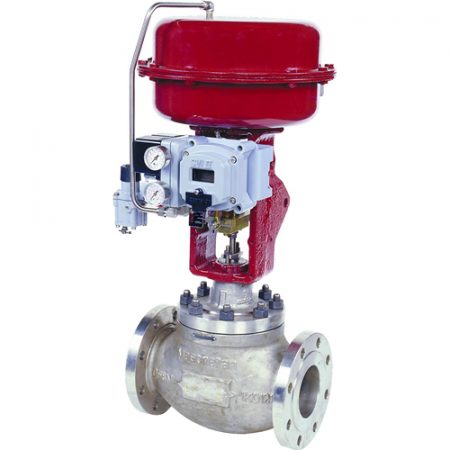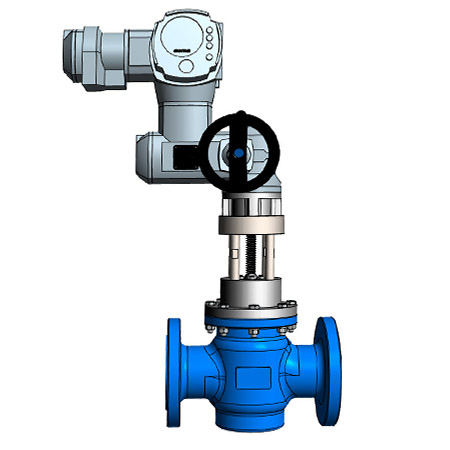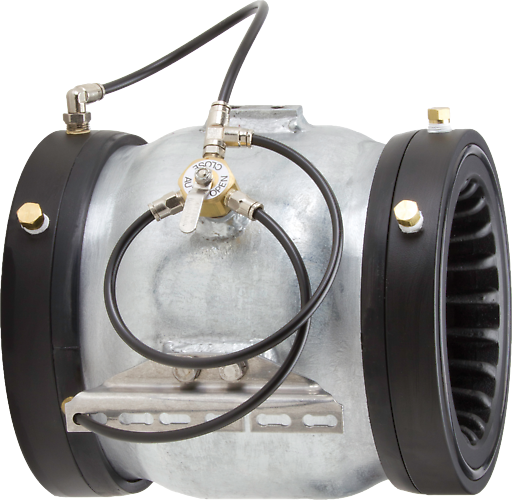Exploring the Functionality of Modern Control Valves in Industrial Applications
Exploring the Functionality of Modern Control Valves in Industrial Applications
Blog Article

Maximize Power Savings and Convenience With Advanced Structure Automation Controls
In the realm of modern style and center administration, the integration of innovative building automation controls stands as a crucial innovation. The convergence of technology and sustainability has birthed a brand-new age where power efficiency, convenience optimization, and operational streamlining are no much longer obtainable realities yet distant desires. By harnessing the power of automation, structures can adjust, respond, and develop in manner ins which were once unthinkable. The potential for considerable energy financial savings and enhanced convenience is not just an assurance however an opportunity waiting to be satisfied. This paradigm change in building monitoring holds the essential to unlocking a globe where environmental conscientiousness and passenger health harmoniously exist side-by-side within the walls of our frameworks.
Energy Performance Advantages
Power performance benefits can substantially lower power consumption and operational costs in structures. By carrying out energy-efficient techniques and modern technologies, structure owners and drivers can accomplish substantial cost savings while also adding to ecological sustainability. Among the key benefits of improving energy performance in buildings is the reduction of utility costs. Energy-efficient systems, such as advanced building automation controls, can maximize making use of sources like home heating, air conditioning, and lights, leading to reduced energy expenditures gradually.
Moreover, boosted energy efficiency can prolong the life expectancy of building tools and systems. By running a lot more successfully, a/c systems, lighting fixtures, and various other building parts experience less damage, resulting in decreased upkeep and replacement expenses. Additionally, energy-efficient structures commonly command greater residential property worths and rental prices, offering lasting financial advantages to owners.
In addition, power efficiency can boost occupant comfort and performance. Correctly managed indoor atmospheres with optimum lighting and thermal problems develop a more pleasurable and helpful work space, resulting in improved worker complete satisfaction and performance. On the whole, the energy efficiency advantages related to innovative building automation controls are complex, encompassing price financial savings, environmental stewardship, and resident wellness.
Boosted Convenience Control
Enhancing comfort control in building atmospheres needs an innovative assimilation of advanced automation systems for optimal resident wellness. By using sophisticated structure automation controls, centers can customize the interior setting to fulfill the details needs and preferences of residents. These systems allow accurate regulation of temperature, lighting, and ventilation, creating a effective and comfy environment. Resident contentment and performance are very closely connected to thermal comfort, making it important to have systems in area that can adjust to altering conditions in real-time.
By incorporating these sophisticated controls, structures can not only improve convenience but likewise boost energy effectiveness by optimizing system operations based on real tenancy and usage patterns. Eventually, focusing on occupant comfort with innovative automation systems leads to a more delightful and healthier indoor atmosphere.
Operational Performance Improvements

Additionally, the execution of real-time monitoring and analytics tools makes it possible for building operators to determine power inefficiencies and operational abnormalities promptly. By continuously checking energy usage patterns and system performance metrics, modifications can be made in real-time to maximize energy consumption and make sure peak functional performance. control valves. Additionally, incorporating demand reaction techniques right into structure automation controls can better enhance operational efficiency by dynamically changing energy usage based on grid conditions and prices signals
Indoor Climate Optimization
Efficient indoor environment optimization is a basic aspect of building automation controls, making sure owners' convenience and health while optimizing power financial savings. By making use of innovative sensing units and controls, constructing automation systems can continually readjust and keep an eye on temperature level, humidity levels, air quality, and ventilation to produce an optimal indoor environment. Keeping regular and comfy conditions not just boosts owner fulfillment however likewise increases productivity and overall well-being.
Interior climate optimization also plays an essential role in power effectiveness. By fine-tuning heating, air conditioning, and air flow systems based upon real-time information and occupancy patterns, constructing automation controls can substantially decrease power usage - control valves. Carrying out strategies such as demand-controlled air flow and thermal zoning can help decrease energy waste while ensuring that each location of the building obtains the required conditioning.

Sustainable Environment Creation
Structure automation regulates not just enhance interior climate conditions for energy performance and passenger comfort but also lay the foundation for developing a lasting atmosphere with calculated administration of resources and systems. By incorporating innovative structure automation innovations, such as sensors, actuators, and intelligent software, facilities can check and change power usage in real-time to decrease waste and minimize their carbon impact. These systems enable anticipating maintenance, identifying possible concerns before they escalate and optimizing equipment performance to boost durability and efficiency.
Additionally, sustainable setting creation expands beyond power administration to include water conservation, waste decrease, and indoor air high quality improvement. Building automation try this out controls can manage water usage, detect leakages, and make sure correct waste disposal methods, adding to total sustainability initiatives. Furthermore, by managing and monitoring air flow and purification systems, these innovations boost resident wellness and efficiency while lowering power consumption related to HVAC operations.
Verdict
In conclusion, advanced building automation manages deal substantial benefits in terms of energy cost savings, convenience control, functional efficiency, indoor environment optimization, and YOURURL.com developing a lasting environment. By executing these controls, buildings can accomplish ideal efficiency while lowering energy consumption and improving resident comfort. It is obvious that the usage of innovative automation technology is essential in improving building performance and producing a much more sustainable future.
Energy effectiveness benefits can substantially lower power intake and functional prices in structures. Overall, the energy effectiveness benefits associated with sophisticated building automation controls are diverse, including expense financial savings, environmental stewardship, and resident wellness.
Furthermore, integrating demand response strategies right into building automation controls can further boost functional effectiveness by dynamically changing energy usage based on grid problems and rates signals.
Structure automation controls not only optimize indoor climate conditions for power effectiveness and passenger convenience but likewise lay the structure for creating a lasting atmosphere via critical management of sources and systems.In conclusion, progressed building automation regulates offer substantial benefits in terms of power savings, convenience control, operational performance, indoor environment optimization, and producing a lasting atmosphere.
Report this page